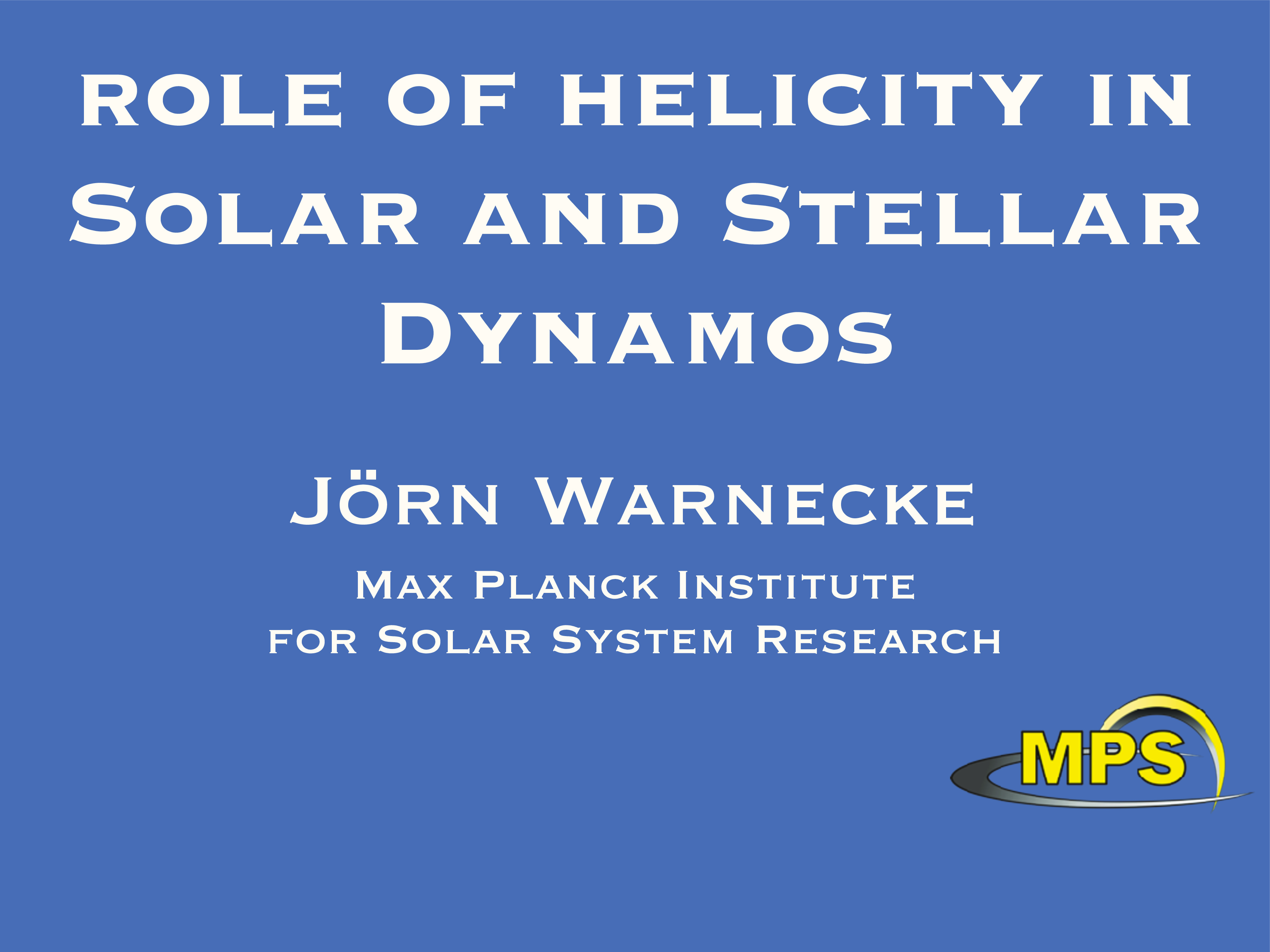Affiliation
Max Planck Institute for Solar System Science
Main category
Natural Sciences (Astrophysics and Astrononmy)
Abstract
The magnetic field in the Sun undergoes a cyclic modulation with a reversal typically every 11 years
due to a dynamo operating under the surface. We simulate slowly to rapidly rotating solar-type stars,
where the interplay between convection and rotation self-consistently drives large-scale magnetic
field. We apply the test-field method to characterise the dynamo mechanisms acting in this simulations
by determining turbulent transport coefficients of the electromotive force. We find that the alphaeffect
has a complex nature and does not follow the profile expected from kinetic helicity. However,
the alpha effects in these simulations show strong rotational dependency resulting in highly
anisotropic tensors and vanish alpha_zz components for rapid rotation. Furthermore, I will present the
determination of magnetic helicity fluxes across the equator and through the surface, which are
important quantities for the alleviation of catastrophically alpha quenching. Unlike in simulation of
forced turbulence of Warnecke et al. (2011), the helicity fluxes across the equator are found to be
much weaker in convection simulations. Moreover, I discuss the the relevants of magnetic and current
helicity production in the dynamo region for the coronal heating process as well as to understand the
activity-rotation-relation of main-sequence stars.
DOI
10.18147/smn.2017/presentation:286
Do you have problems viewing the pdf-file? Download presentation
here
If the presentation contains inappropriate content, please
report the presentation. You will be redirected to the landing page.
